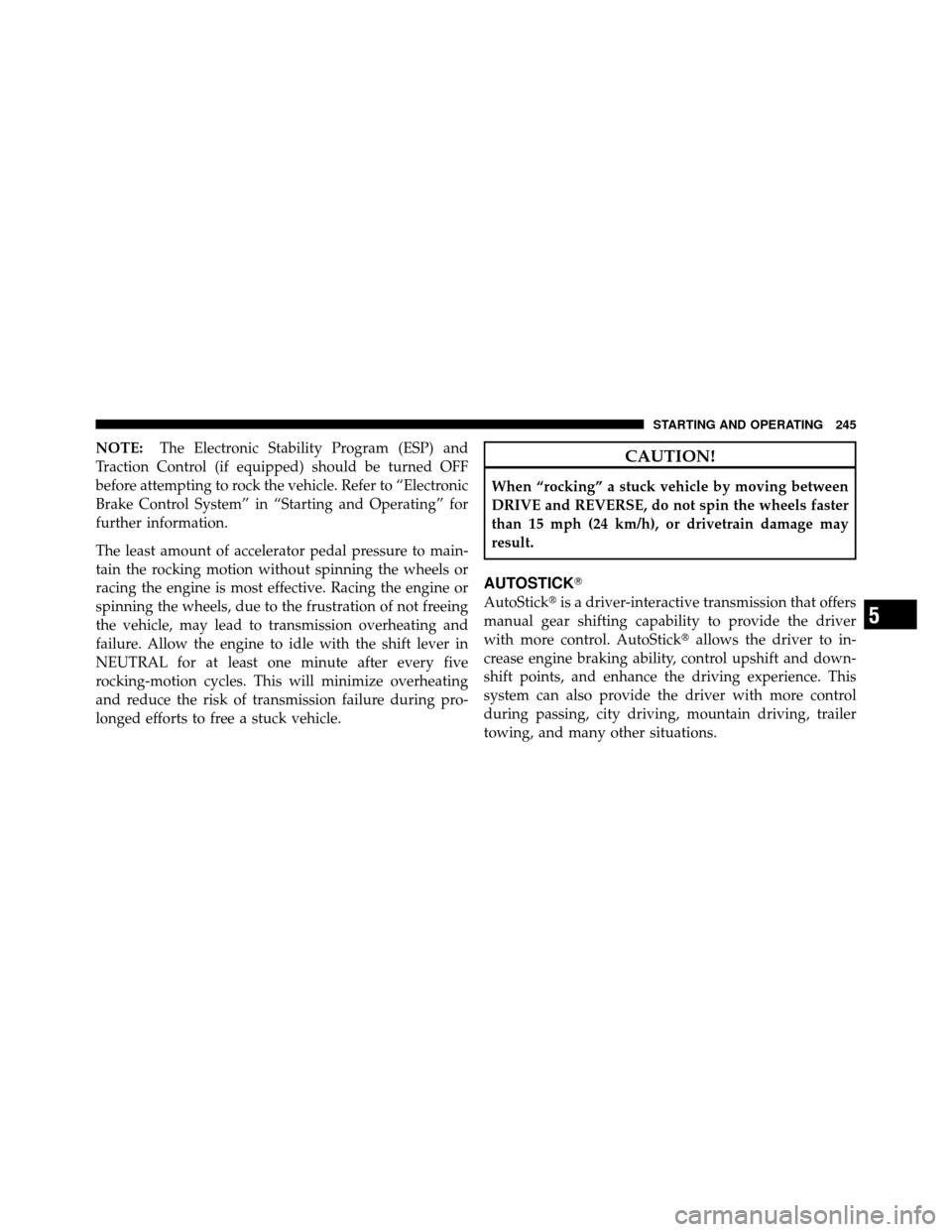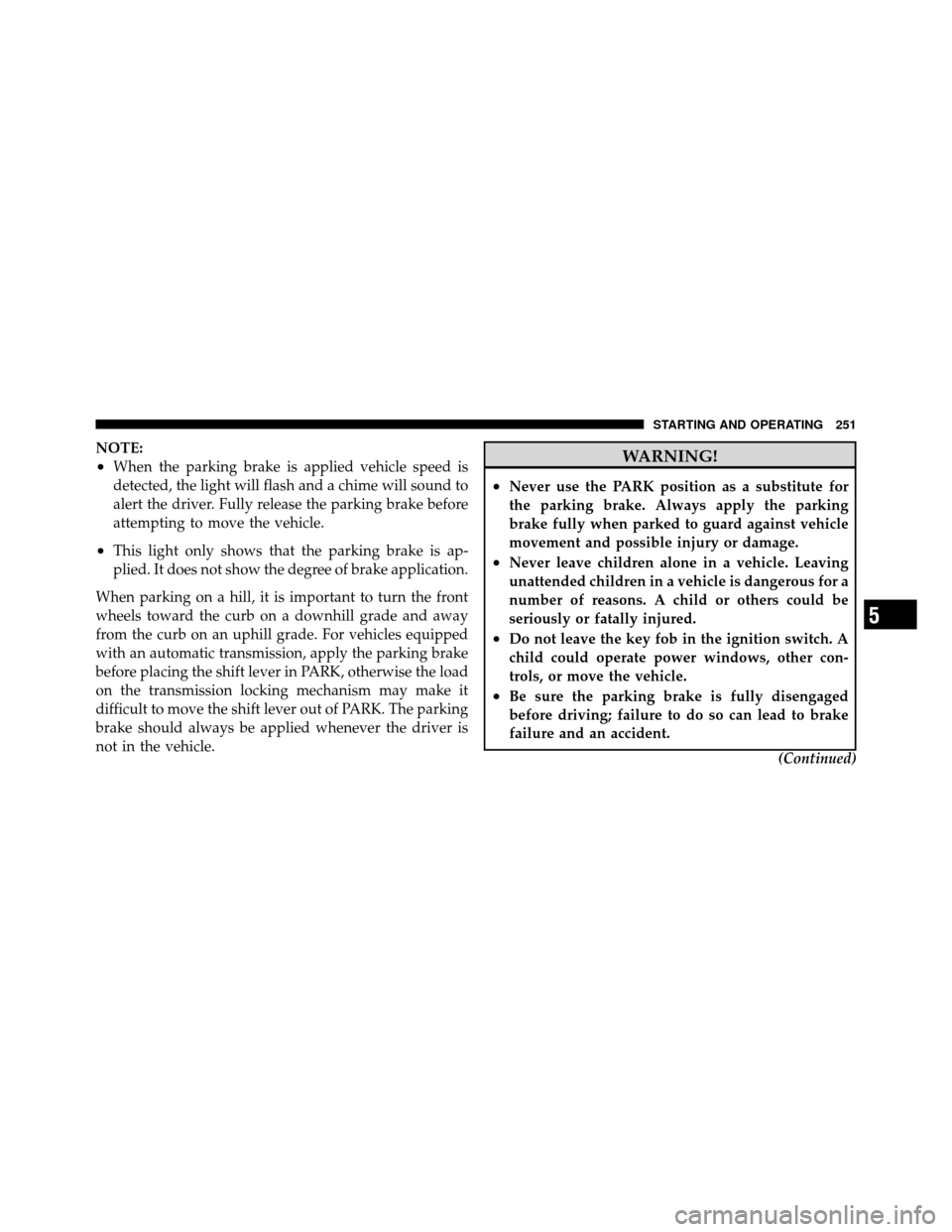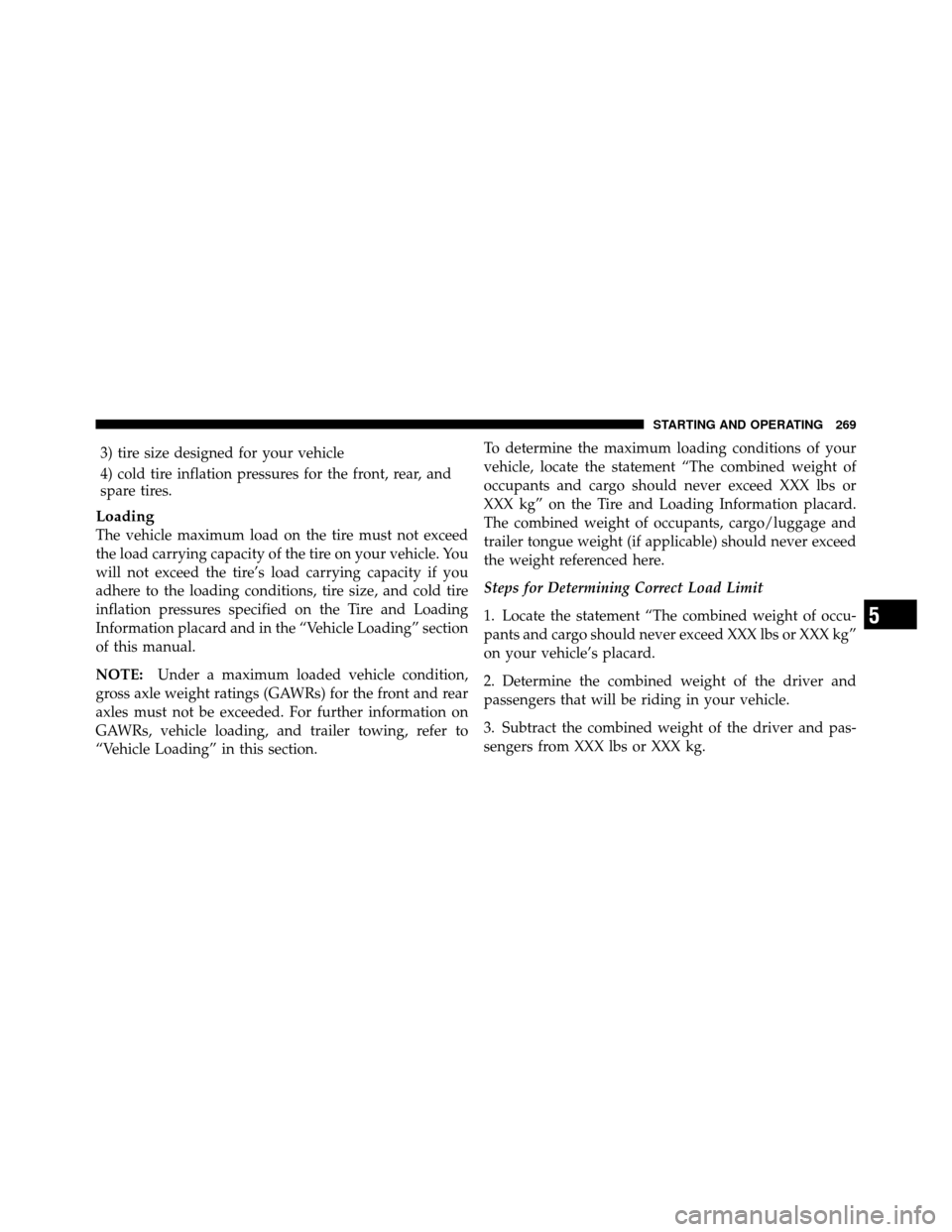Page 223 of 407
3. Slide the subwoofer toward the front of the vehicle so
that the rear edge lines up with the end of the load floor.
4. Connect the electrical connector.
5. Fold the left rear passenger seat rearward into the
upright position. The rear tether anchors should engage
the hooks located on the back of the subwoofer.Removing The Subwoofer
1. Lower the left rear passenger seat.
2. Disconnect the electrical connector.
3. Remove the subwoofer.
222 UNDERSTANDING YOUR INSTRUMENT PANEL
Page 233 of 407

captured interior air to condense on windows and ham-
per visibility. For this reason, the system will not allow
“Recirculation” mode to be selected while in the defrost
or defrost/floor modes. Attempting to use Recirculation
while in these modes will cause the LED in the button to
blink and then turn off.
Operating Tips
Window Fogging
Windows will fog on the inside when the humidity inside
the vehicle is high. This often occurs in mild or cool
temperatures when it’s rainy or humid. In most cases,
turning the air conditioning (pressing the snowflake
button) on will clear the fog. Adjust the temperature
control, air direction, and blower speed to maintain
comfort.
As the temperature gets colder, it may be necessary to
direct air onto the windshield. Adjust the temperature
control and blower speed to maintain comfort. Higherblower speeds will reduce fogging. Interior fogging on
the windshield can be quickly removed by selecting the
defrost mode.
Regular cleaning of the inside of the windows with a
non-filming cleaning solution (vinegar and water works
very well) will help prevent contaminates (cigarette
smoke, perfumes, etc.) from sticking to the windows.
Contaminates increase the rate of window fogging.Summer Operation
Air conditioned vehicles must be protected with a high
quality antifreeze coolant, during the summer, to provide
proper corrosion protection and to raise the boiling point
of the coolant for protection against overheating. A 50 %
concentration is recommended. Refer to Recommended
Fluids and Genuine Parts for the proper coolant type.
When using the air conditioner in extremely heavy
traffic, in hot weather, especially when towing a trailer,
232 UNDERSTANDING YOUR INSTRUMENT PANEL
Page 238 of 407

▫Replacement Tires .................... 277
� Tire Rotation Recommendations ........... 278
� Tire Pressure Monitor System (TPMS) ....... 279
▫ Premium System .................... 279
▫ General Information .................. 282
� Fuel Requirements ..................... 282
▫ 6.1L Engine ........................ 282
▫ Reformulated Gasoline ................ 283
▫ Gasoline/Oxygenate Blends ............. 283
▫ E85 Usage In Non-Flex Fuel Vehicles ...... 284
▫ MMT In Gasoline .................... 284
▫ Materials Added To Fuel ............... 285
▫ Fuel System Cautions ................. 285 ▫
Carbon Monoxide Warnings ............ 286
� Adding Fuel ......................... 287
▫ Fuel Filler Cap (Gas Cap) .............. 287
▫ Loose Fuel Filler Cap Message ........... 288
� Trailer Towing ........................ 289
▫ Common Towing Definitions ............ 289
▫ Trailer Hitch Classification .............. 292
▫ Trailer Towing Weights
(Maximum Trailer Weight Ratings) ........ 293
▫ Trailer And Trailer Tongue Weight ........ 293
▫ Towing Requirements ................. 295
▫ Towing Tips ........................ 298
� Recreational Towing
(Behind Motorhome, Etc.) ................ 299
5
STARTING AND OPERATING 237
Page 240 of 407

Extreme Cold Weather (Below�20°F or�29°C)
To ensure reliable starting at these temperatures, use of
an externally powered electric engine block heater (avail-
able from your authorized dealer) is recommended.
If Engine Fails To Start
WARNING!
•Never pour fuel or other flammable liquids into
the throttle body air inlet opening in an attempt to
start the vehicle. This could result in a flash fire
causing serious personal injury.
(Continued)
WARNING! (Continued)
•Do not attempt to push or tow your vehicle to get
it started. Vehicles equipped with an automatic
transmission cannot be started this way. Unburned
fuel could enter the catalytic converter and once
the engine has started, ignite and damage the
converter and vehicle. If the vehicle has a dis-
charged battery, booster cables may be used to
obtain a start from a booster battery or the battery
in another vehicle. This type of start can be dan-
gerous if done improperly. Refer to “Jump Start-
ing” in “What to Do In Emergencies” for further
information.
5
STARTING AND OPERATING 239
Page 246 of 407

NOTE:The Electronic Stability Program (ESP) and
Traction Control (if equipped) should be turned OFF
before attempting to rock the vehicle. Refer to “Electronic
Brake Control System” in “Starting and Operating” for
further information.
The least amount of accelerator pedal pressure to main-
tain the rocking motion without spinning the wheels or
racing the engine is most effective. Racing the engine or
spinning the wheels, due to the frustration of not freeing
the vehicle, may lead to transmission overheating and
failure. Allow the engine to idle with the shift lever in
NEUTRAL for at least one minute after every five
rocking-motion cycles. This will minimize overheating
and reduce the risk of transmission failure during pro-
longed efforts to free a stuck vehicle.CAUTION!
When “rocking” a stuck vehicle by moving between
DRIVE and REVERSE, do not spin the wheels faster
than 15 mph (24 km/h), or drivetrain damage may
result.
AUTOSTICK�
AutoStick� is a driver-interactive transmission that offers
manual gear shifting capability to provide the driver
with more control. AutoStick� allows the driver to in-
crease engine braking ability, control upshift and down-
shift points, and enhance the driving experience. This
system can also provide the driver with more control
during passing, city driving, mountain driving, trailer
towing, and many other situations.
5
STARTING AND OPERATING 245
Page 252 of 407

NOTE:
•When the parking brake is applied vehicle speed is
detected, the light will flash and a chime will sound to
alert the driver. Fully release the parking brake before
attempting to move the vehicle.
•This light only shows that the parking brake is ap-
plied. It does not show the degree of brake application.
When parking on a hill, it is important to turn the front
wheels toward the curb on a downhill grade and away
from the curb on an uphill grade. For vehicles equipped
with an automatic transmission, apply the parking brake
before placing the shift lever in PARK, otherwise the load
on the transmission locking mechanism may make it
difficult to move the shift lever out of PARK. The parking
brake should always be applied whenever the driver is
not in the vehicle.
WARNING!
•Never use the PARK position as a substitute for
the parking brake. Always apply the parking
brake fully when parked to guard against vehicle
movement and possible injury or damage.
•Never leave children alone in a vehicle. Leaving
unattended children in a vehicle is dangerous for a
number of reasons. A child or others could be
seriously or fatally injured.
•Do not leave the key fob in the ignition switch. A
child could operate power windows, other con-
trols, or move the vehicle.
•Be sure the parking brake is fully disengaged
before driving; failure to do so can lead to brake
failure and an accident. (Continued)
5
STARTING AND OPERATING 251
Page 261 of 407

Off” mode by pressing the “ESP OFF” switch. Once the
situation requiring ESP to be switched to the “ESP Partial
Off” mode is overcome, turn ESP back on by momen-
tarily pressing the “ESP OFF” switch. This may be done
while the vehicle is in motion.
Trailer Sway Control (TSC)
TSC uses sensors in the vehicle to recognize an exces-
sively swaying trailer and will take the appropriate
actions to attempt to stop the sway. The system may
reduce engine power and apply the brake of the appro-
priate wheel(s) to counteract the sway of the trailer. TSC
will become active automatically once an excessively
swaying trailer is recognized. No driver action is re-
quired. Note that TSC cannot stop all trailers from
swaying. Always use caution when towing a trailer and
follow the tongue weight recommendations. Refer to
“Trailer Towing” in “Starting and Operating” for further
information. When TSC is functioning, the “ESP/TCS
Indicator Light” will flash, the engine power may bereduced and you may feel the brakes being applied to
individual wheels to attempt to stop the trailer from
swaying. TSC is disabled when the ESP system is in the
“Partial Off” mode.
WARNING!
If TSC activates while driving, slow the vehicle
down, stop at the nearest safe location, and adjust the
trailer load to eliminate trailer sway.
ESP/BAS Warning Light and ESP/TCS Indicator
Light
The malfunction indicator lamp for the ESP is
combined with the BAS indicator. The “ESP/
BAS Warning Light” and the “ESP/TCS Indi-
cator Light” in the instrument cluster both
come on when the ignition switch is turned to the ON
position. They should both go out with the engine
running.
260 STARTING AND OPERATING
Page 270 of 407

3) tire size designed for your vehicle
4) cold tire inflation pressures for the front, rear, and
spare tires.
Loading
The vehicle maximum load on the tire must not exceed
the load carrying capacity of the tire on your vehicle. You
will not exceed the tire’s load carrying capacity if you
adhere to the loading conditions, tire size, and cold tire
inflation pressures specified on the Tire and Loading
Information placard and in the “Vehicle Loading” section
of this manual.
NOTE:Under a maximum loaded vehicle condition,
gross axle weight ratings (GAWRs) for the front and rear
axles must not be exceeded. For further information on
GAWRs, vehicle loading, and trailer towing, refer to
“Vehicle Loading” in this section. To determine the maximum loading conditions of your
vehicle, locate the statement “The combined weight of
occupants and cargo should never exceed XXX lbs or
XXX kg” on the Tire and Loading Information placard.
The combined weight of occupants, cargo/luggage and
trailer tongue weight (if applicable) should never exceed
the weight referenced here.
Steps for Determining Correct Load Limit
1. Locate the statement “The combined weight of occu-
pants and cargo should never exceed XXX lbs or XXX kg”
on your vehicle’s placard.
2. Determine the combined weight of the driver and
passengers that will be riding in your vehicle.
3. Subtract the combined weight of the driver and pas-
sengers from XXX lbs or XXX kg.
5
STARTING AND OPERATING 269